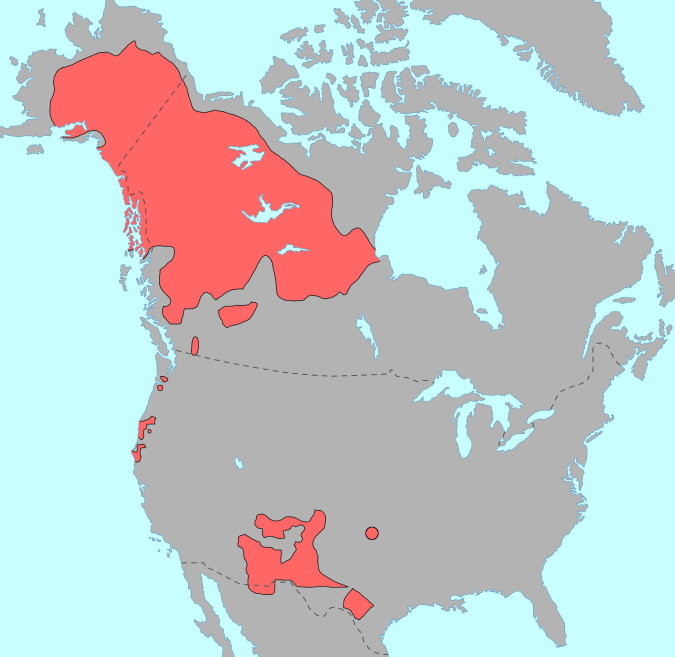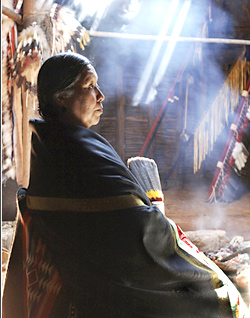|
Dismal River Culture
The Dismal River culture refers to a set of cultural attributes first seen in the Dismal River area of Nebraska in the 1930s by archaeologists William Duncan Strong, Waldo Rudolph Wedel and A. T. Hill. Also known as Dismal River aspect and Dismal River complex, dated between 1650 and 1750 A.D., is different from other prehistoric Central Plains and Woodland traditions of the western Plains. The Dismal River people are believed to have spoken an Athabascan language and to have been part of the people later known to Europeans as the Apache.Gibbon, Guy E.; Ames, Kenneth M. (1998''Archaeology of Prehistoric Native America: An Encyclopedia''.p. 212. .Gibbon, Guy E.; Ames, Kenneth M. (1998''Archaeology of Prehistoric Native America: An Encyclopedia''.pp. 213, 768. . Western Plains Dismal River culture sites have been found in Nebraska, Kansas, Colorado and South Dakota. 18 sites were located in Hayes, Hooker, Cherry, Thomas and Lincoln counties in the Sandhills of Nebraska. N ... [...More Info...] [...Related Items...] OR: [Wikipedia] [Google] [Baidu] |
Colorado
Colorado is a U.S. state, state in the Western United States. It is one of the Mountain states, sharing the Four Corners region with Arizona, New Mexico, and Utah. It is also bordered by Wyoming to the north, Nebraska to the northeast, Kansas to the east, and Oklahoma to the southeast. Colorado is noted for its landscape of mountains, forests, High Plains (United States), high plains, mesas, canyons, plateaus, rivers, and desert lands. It encompasses most of the Southern Rocky Mountains, as well as the northeastern portion of the Colorado Plateau and the western edge of the Great Plains. Colorado is the List of U.S. states and territories by area, eighth-largest U.S. state by area and the List of U.S. states and territories by population, 21st by population. The United States Census Bureau estimated the population of Colorado to be 5,957,493 as of July 1, 2024, a 3.2% increase from the 2020 United States census. The region has been inhabited by Native Americans in the United St ... [...More Info...] [...Related Items...] OR: [Wikipedia] [Google] [Baidu] |
Lincoln County, Nebraska
Lincoln County is a county located in the U.S. state of Nebraska. As of the 2020 census, the population was 34,676. Its county seat is North Platte. Despite the county's name, the state capital city of Lincoln is not in or near Lincoln County. Lincoln County is one of the three counties in the North Platte Micropolitan Statistical Area. In the Nebraska license plate system, Lincoln County is represented by the prefix 15 (it had the fifteenth-largest number of vehicles registered for a state county when the license plate system was established in 1922). Geography Lincoln County is located in the Nebraska Sandhills, a region of mixed-grass prairie on grass-stabilized dunes. The land is generally given to agriculture, with considerable center pivot irrigation and cattle ranching. The North Platte River and the South Platte River flow eastward from Keith County, joining to form the Platte River east of the city of North Platte in central Lincoln County. The Platte then fl ... [...More Info...] [...Related Items...] OR: [Wikipedia] [Google] [Baidu] |
Jicarilla Apache
Jicarilla Apache (, Jicarilla language: Jicarilla Dindéi), one of several loosely organized autonomous bands of the Eastern Apache, refers to the members of the Jicarilla Apache Nation currently living in New Mexico and speaking a Southern Athabaskan language. The term ''jicarilla'' comes from Mexican Spanish meaning "little basket", referring to the small sealed baskets they used as drinking vessels. To neighboring Apache bands, such as the Mescalero and Lipan, they were known as ''Kinya-Inde'' ("People who live in fixed houses"). The Jicarilla called themselves also ''Haisndayin,'' translated as "people who came from below" because they believed themselves to be the sole descendants of the first people to emerge from the underworld. The underworld was the home of Ancestral Man and Ancestral Woman, who produced the first people. The Jicarilla believed ''Hascin'', their chief deity, created Ancestral Man and Ancestral Woman, as well as all the animals, the sun, and the moon. The ... [...More Info...] [...Related Items...] OR: [Wikipedia] [Google] [Baidu] |
Southwestern United States
The Southwestern United States, also known as the American Southwest or simply the Southwest, is a geographic and cultural list of regions of the United States, region of the United States that includes Arizona and New Mexico, along with adjacent portions of California, Colorado, Nevada, Oklahoma, Texas, and Utah. The largest cities by List of metropolitan statistical areas, metropolitan area are Phoenix, Arizona, Phoenix, Las Vegas, El Paso, Texas, El Paso, Albuquerque, and Tucson, Arizona, Tucson. Before 1848, in the historical region of Santa Fe de Nuevo México as well as parts of Alta California and Coahuila y Tejas, settlement was almost non-existent outside of New Mexico's pueblos and Santa Fe de Nuevo México#Regions and municipalities, Spanish or Mexican municipalities. Much of the area had been a part of New Spain and Mexico until the United States acquired the area through the Treaty of Guadalupe Hidalgo in 1848 and the smaller Gadsden Purchase in 1854. While the regio ... [...More Info...] [...Related Items...] OR: [Wikipedia] [Google] [Baidu] |
Canada
Canada is a country in North America. Its Provinces and territories of Canada, ten provinces and three territories extend from the Atlantic Ocean to the Pacific Ocean and northward into the Arctic Ocean, making it the world's List of countries and dependencies by area, second-largest country by total area, with the List of countries by length of coastline, world's longest coastline. Its Canada–United States border, border with the United States is the world's longest international land border. The country is characterized by a wide range of both Temperature in Canada, meteorologic and Geography of Canada, geological regions. With Population of Canada, a population of over 41million people, it has widely varying population densities, with the majority residing in List of the largest population centres in Canada, urban areas and large areas of the country being sparsely populated. Canada's capital is Ottawa and List of census metropolitan areas and agglomerations in Canada, ... [...More Info...] [...Related Items...] OR: [Wikipedia] [Google] [Baidu] |
Alaska
Alaska ( ) is a non-contiguous U.S. state on the northwest extremity of North America. Part of the Western United States region, it is one of the two non-contiguous U.S. states, alongside Hawaii. Alaska is also considered to be the northernmost, westernmost, and easternmost (the Aleutian Islands cross the 180th meridian into the eastern hemisphere) state in the United States. It borders the Canadian territory of Yukon and the province of British Columbia to the east. It shares a western maritime border, in the Bering Strait, with Russia's Chukotka Autonomous Okrug. The Chukchi and Beaufort Seas of the Arctic Ocean lie to the north, and the Pacific Ocean lies to the south. Technically, it is a semi-exclave of the U.S., and is the largest exclave in the world. Alaska is the largest U.S. state by area, comprising more total area than the following three largest states of Texas, California, and Montana combined, and is the seventh-largest subnational division i ... [...More Info...] [...Related Items...] OR: [Wikipedia] [Google] [Baidu] |
North America
North America is a continent in the Northern Hemisphere, Northern and Western Hemisphere, Western hemispheres. North America is bordered to the north by the Arctic Ocean, to the east by the Atlantic Ocean, to the southeast by South America and the Caribbean Sea, and to the south and west by the Pacific Ocean. The region includes Middle America (Americas), Middle America (comprising the Caribbean, Central America, and Mexico) and Northern America. North America covers an area of about , representing approximately 16.5% of Earth's land area and 4.8% of its total surface area. It is the third-largest continent by size after Asia and Africa, and the list of continents and continental subregions by population, fourth-largest continent by population after Asia, Africa, and Europe. , North America's population was estimated as over 592 million people in list of sovereign states and dependent territories in North America, 23 independent states, or about 7.5% of the world's popula ... [...More Info...] [...Related Items...] OR: [Wikipedia] [Google] [Baidu] |
Na-Dene Langs
Na-Dene ( ; also Nadene, Na-Dené, Athabaskan–Eyak–Tlingit, Tlina–Dene) is a family of Native American languages that includes at least the Athabaskan languages, Eyak, and Tlingit languages. Haida was formerly included but is now generally considered a language isolate. By far the most widely spoken Na-Dene language today is Navajo, also the most spoken indigenous language north of Mexico. Some linguists have proposed that the Na-Dene family is related to the Yeniseian languages of central Siberia, creating a Dene–Yeniseian family.Dene–Yeniseic Symposium , University of Alaska Fairbanks, February 2008, accessed 30 Mar 2010 However, this proposal has not been accepted by some linguists. Etymology |
Apishapa Culture
The Apishapa culture, or Apishapa Phase, a prehistoric culture from 1000 to 1400, was named based upon an archaeological site in the Lower Apishapa canyon in Colorado.Gibbon, Guy E.; Ames, Kenneth M. (1998''Archaeology of Prehistoric Native America: An Encyclopedia''.p. 24. . The Apishapa River, a tributary of the Arkansas River, formed the Apishapa canyon. In 1976, there were 68 Apishapa sites on the Chaquaqua Plateau in southeastern Colorado.Gunnerson, James H. (1987)''Archaeology of the High Plains.''Denver: United States Forest Service. p. 89. Origin The Apishapa culture, primarily found in the Arkansas River basin of southeastern Colorado, may have evolved from the Panhandle culture or people indigenous to Colorado of the Woodland Period culture. Culture Apishapa sites, found in Colorado and New Mexico, represented a tradition of hunter gatherers who sometimes farmed beans and five types of maize. They gathered wild plants and hunted bison, deer, pronghorn, rabbit and ot ... [...More Info...] [...Related Items...] OR: [Wikipedia] [Google] [Baidu] |
Plains Apache
The Plains Apache are a small Southern Athabaskan tribe who live on the Southern Plains of North America, in close association with the linguistically unrelated Kiowa Tribe. Today, they are headquartered in Southwestern Oklahoma and are federally recognized as the Apache Tribe of Oklahoma. They mostly live in Comanche and Caddo County, Oklahoma. Name Their autonym is Ná'ishą, or "takers" based on their skill at stealing horses, or Naishadena, meaning "our people." This is also written ''Na-i-shan Dine''.Pritzker, 295 They were also called ''Káłt'inde'' or ''γát dìndé'' meaning "cedar people" or ''Bek'áhe'' meaning "whetstone people". The Plains Apache are also known as the Kiowa Apache. To their Kiowa allies, who speak an unrelated language, the Plains Apache are known as Semat. At major historical tribal events, the Plains Apache formed part of the Kiowa tribal "hoop" (ring of tipis). This may explain why the Kiowa named the Plains Apache ''Taugui'' meaning "sitting ... [...More Info...] [...Related Items...] OR: [Wikipedia] [Google] [Baidu] |





